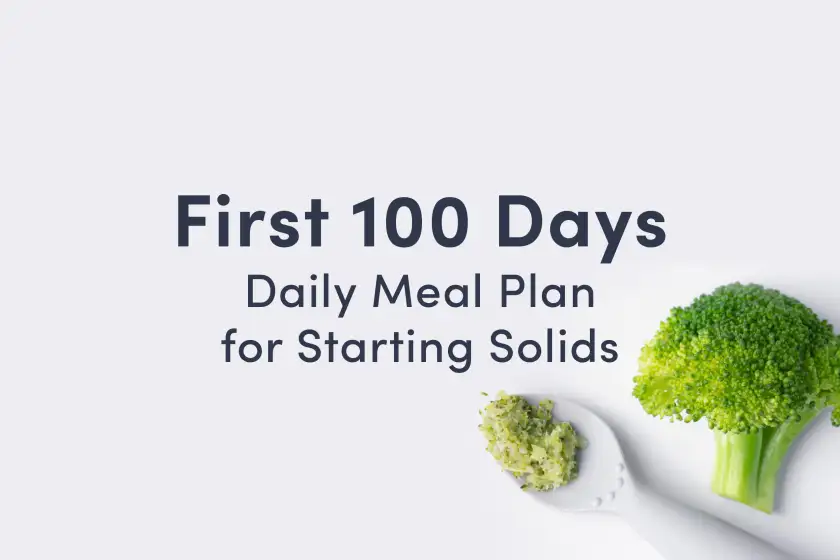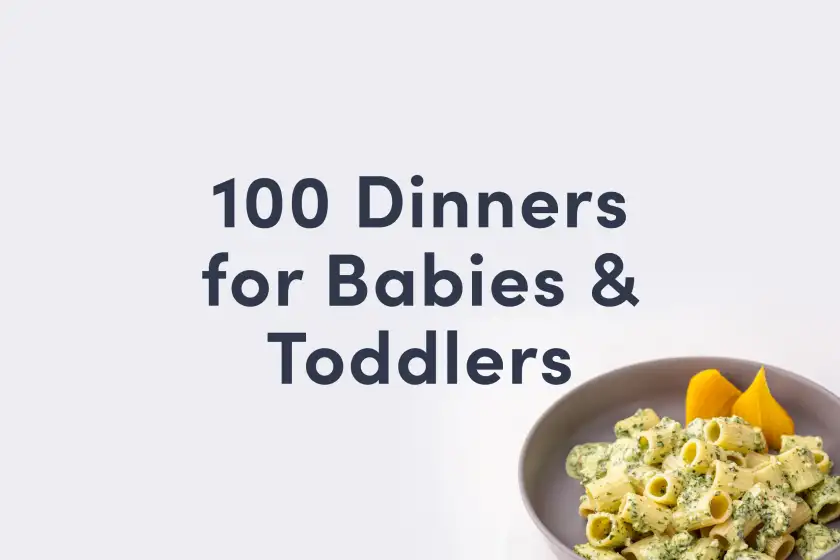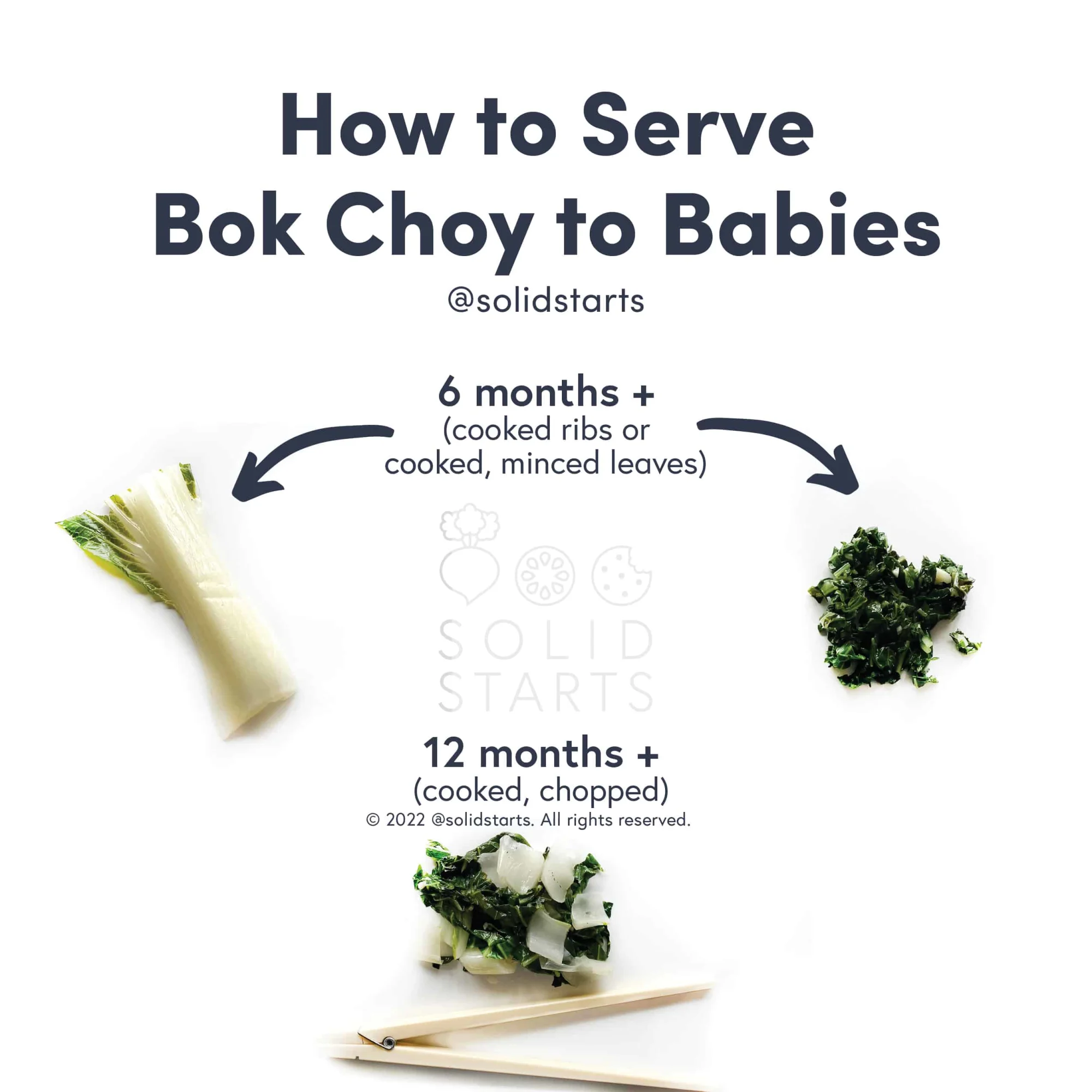Bok Choy
Vegetable
Age Suggestion
6 months
Iron-Rich
No
Common Allergen
No
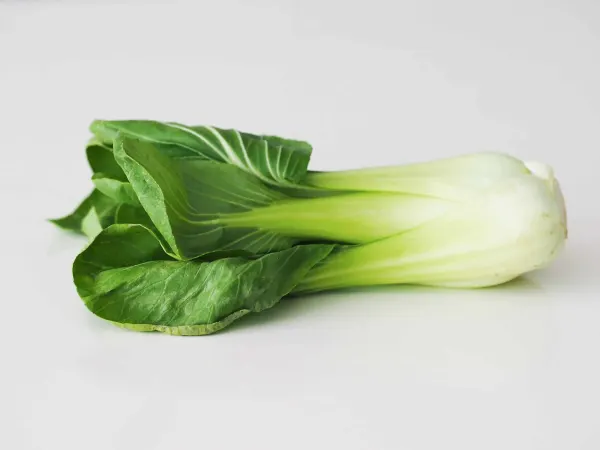
When can babies eat bok choy?
Bok choy may be introduced as soon as baby is ready to start solids, which is generally around 6 months of age.
Where does bok choy come from?
Bok choy is a brassica—the family of cruciferous vegetables that includes broccoli, cabbage, collard greens, and kale. The leafy green originated in China, where it has been cultivated for thousands of years as a source of food and medicine. In fact, its name comes from the Cantonese language, which is sometimes transliterated to “pak” choy or anglicized to “Chinese cabbage” in English-speaking parts of the world. There are different varieties of bok choy to try—some with long, flat jade-colored leaves and narrow stalks; others with frilly emerald-colored leaves and white spoon-like ribs. Size varies, too. Bok choy can grow up to 2 feet in height, but there are smaller varieties (often marketed as “baby bok choy”) that have a milder taste.
★Tip: Fresh bok choy has a shorter shelf life than some of its cruciferous cousins. Store the unwashed leafy greens in a loose bag or towel in the fridge for 2 days, or freeze the cabbage in an air-tight container for up to 10 months.
Videos
Is bok choy healthy for babies?
Yes. Like its fellow cruciferous vegetables, bok choy is a nutrient powerhouse. The leafy green contains lots of essential nutrients, including calcium, vitamins A and B6, and high amounts of vitamins C and K—important contributors to a baby’s growth and development. Take advantage of boy choy’s abundance of vitamin C by serving the greens alongside plant-based foods that are full of iron, like beans, lentils, and tofu. The vitamin C helps baby’s body absorb the iron, which is critical at this early stage of life.
Bonus: Bok choy is packed with phytonutrients and antioxidants that help prevent cancer and benefit the body in countless ways. They even help the body break down toxins—a mighty superpower in our modern era in which potentially harmful chemicals surround us in our everyday environment.
★Tip: Add a squeeze of lemon or your favorite citrus while cooking bok choy. The acidity not only helps preserve the bright green color, but also helps retain the plant’s nutrients.
Is bok choy a common choking hazard for babies?
No. Bok choy is not a common choking hazard. However, the leaves can cling to the roof of the mouth and back of the throat, which can cause discomfort. To make it easy for babies to eat, mince or finely chop cooked bok choy and fold into other foods or serve large sections of the white rib for baby to munch on.
As always, make sure to create a safe eating environment, stay within an arm’s reach of a baby during meals, and check out our age-appropriate serving suggestions.
For more information, visit our section on gagging and choking and familiarize yourself with common choking hazards.
Is bok choy a common allergen?
No. Bok choy is not a common allergen, though information is limited. Because bok choy is a member of the cruciferous vegetable family, bok choy may also trigger sensitivities in individuals who react to broccoli and cabbage. Sensitivities to cruciferous vegetables may also arise in individuals with Oral Allergy Syndrome (also called pollen-food allergy syndrome) and in particular, those with sensitivities to mugwort pollen. Oral Allergy Syndrome typically results in short-lived itching in the mouth and is unlikely to result in a dangerous reaction.
As you would when introducing any new food, start by offering a small quantity during the first couple of servings. If there is no adverse reaction, gradually increase the quantity over future meals.
Recommended Guide: Introducing Allergens
How to cut bok choy for babies with baby-led weaning?
Every baby develops on their own timeline, and the suggestions on how to cut or prepare particular foods are generalizations for a broad audience.
6 to 12 months old:
Bigger is better! At this age, larger shapes are easier for babies to hold and munch, so try offering whole, cooked bok choy ribs—the firm, light green or white part of the plant. Keep in mind, when offering a long piece of food like a cooked bok choy rib, baby may poke the back of their tongue or mouth with a bit, causing some harmless gagging. Don’t be alarmed; this poking and prodding the tongue with sticks of food can actually be beneficial in helping baby learn the boundaries of their mouth. Not up for the big piece of food? You can also just mince both the leafy greens and the ribs, cook until soft, and fold into soft, scoopable foods like mashed vegetables and grain salads.
12 to 18 months old:
Try serving cooked bok choy on its own to familiarize the flavor of this nutritious leafy green. If the leaves make you nervous, mince or shred them and serve alongside some water in an open cup to help wash them down.
18 to 24 months old:
Time to explore! Serve cooked bok choy any way you like it. Experiment with adding cooked bok choy to dishes like congee, curry, and ramen. Manage your expectations, too: toddlers often begin to reject new foods around this age and are learning how to assert their independence and test relationships to caregivers. Don’t let this deter you from trying! Continue to serve veggies at mealtime, refrain from pressuring a toddler to eat, and be patient.
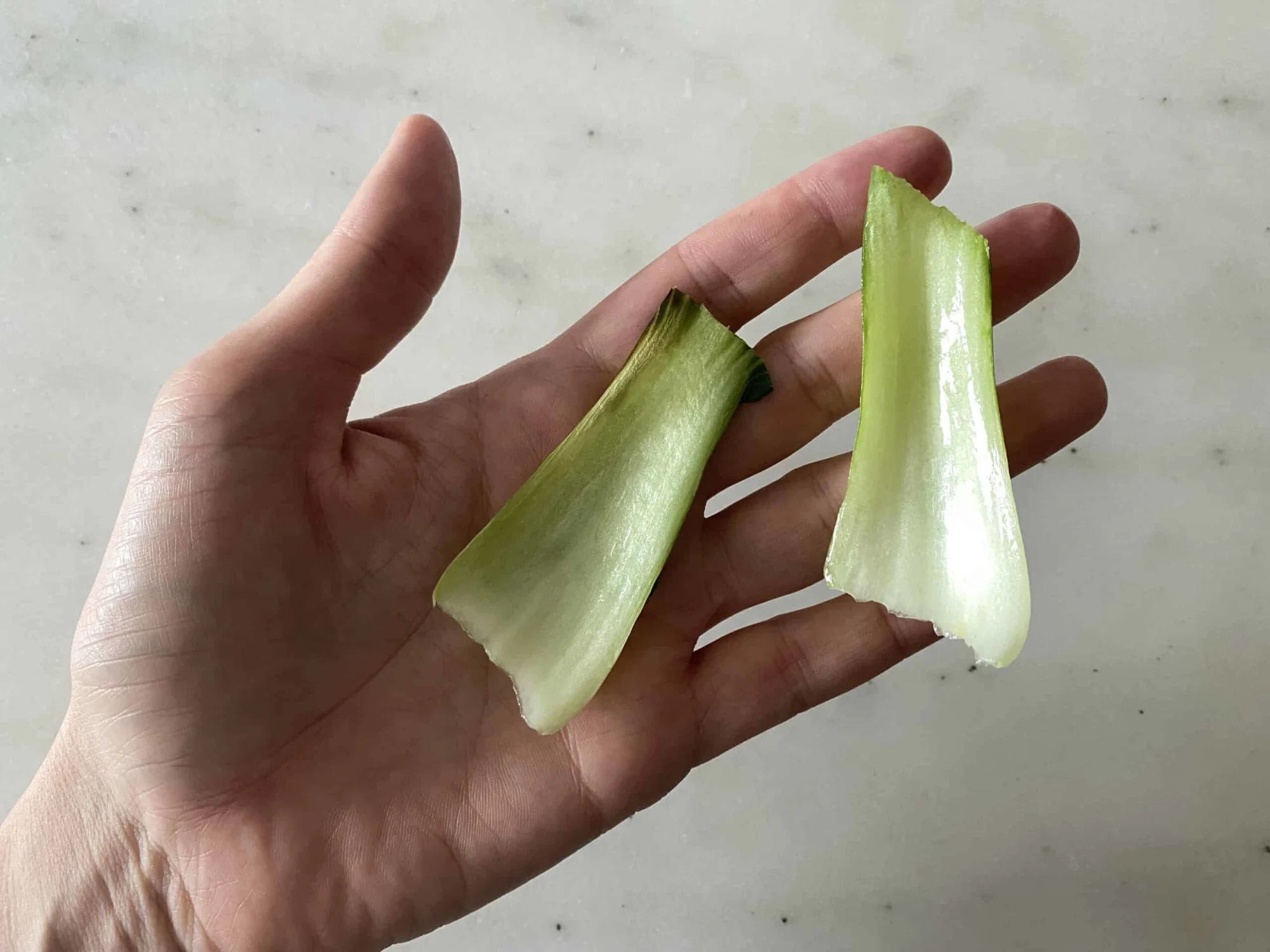
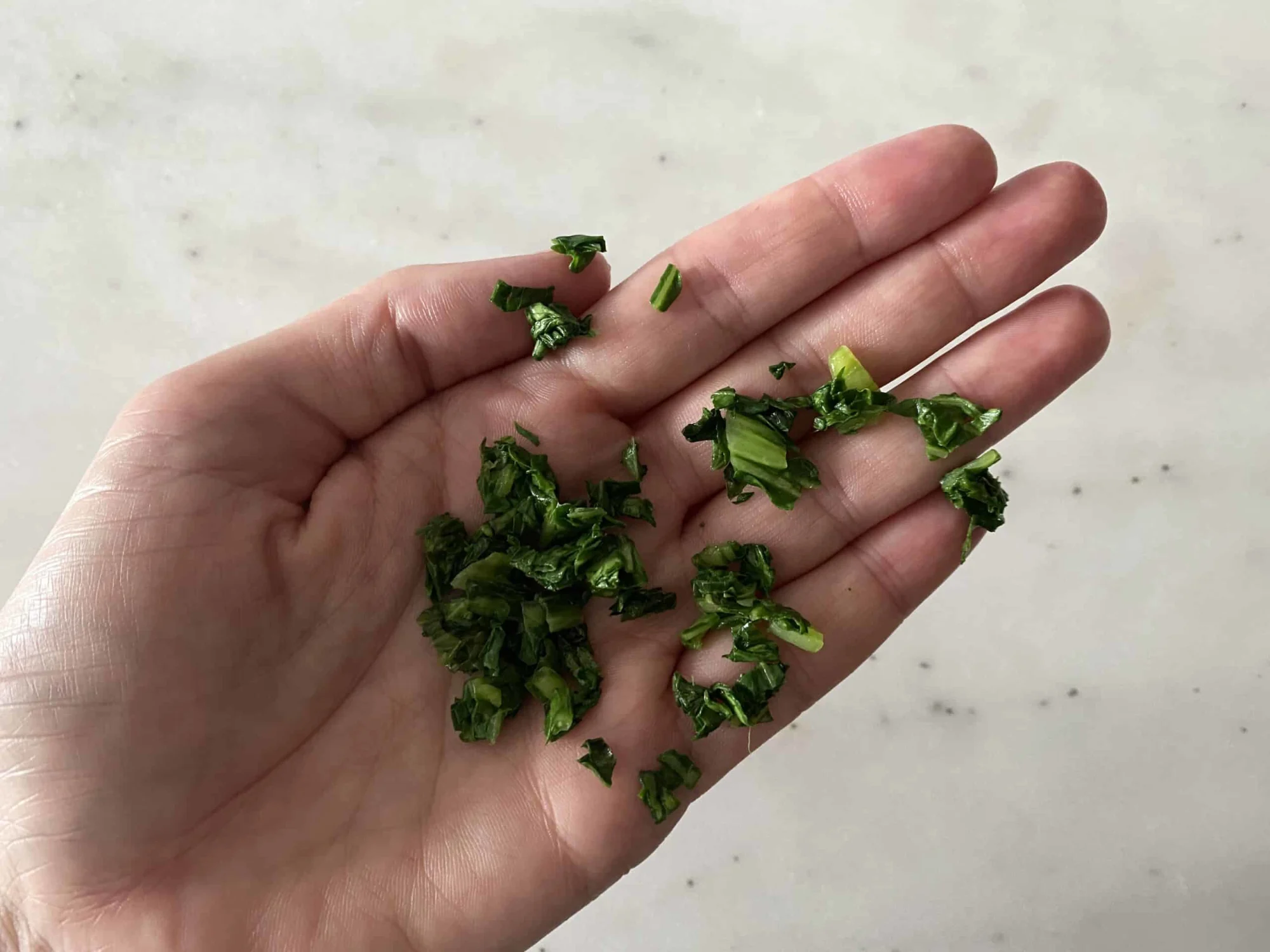
Preparing bok choy ribs.
Separating bok choy leaves from the stems and mincing.
For more guidelines, recipes, and one-on-one email support, see our Starting Solids bundle.
Written by
Expert Tips Delivered to Your Inbox
Sign up for weekly tips, recipes and more!
The content offered on SolidStarts.com is for informational purposes only. Solidstarts is not engaged in rendering professional advice, whether medical or otherwise, to individual users or their children or families. No content on this site, regardless of date, should ever be used as a substitute for direct medical advice from your doctor or your medical or health professional, nutritionist, or expert in pediatric feeding and eating. By accessing the content on SolidStarts.com, you acknowledge and agree that you are accepting the responsibility for your child’s health and well-being. In return for providing you with an array of content “baby-led weaning” information, you waive any claims that you or your child may have as a result of utilizing the content on SolidStarts.com.



